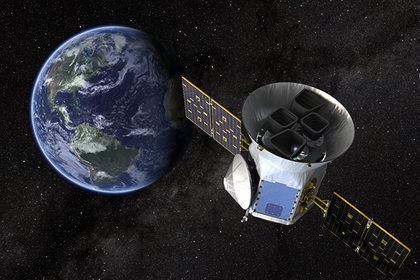The data transmitted by the telescope was combined into a single catalog
NEW YORK, March 26. /TASS/. The Transiting Exoplanet Survey Satellite (TESS) has discovered 2,241 potentially habitable planets in two years in orbit, in addition to those NASA already knew about. This was reported on Friday by the Internet portal Space.com with reference to the statement of a group of scientists from the Massachusetts Institute of Technology (MIT), who are working together with NASA on the implementation of this project.
The researchers combined all the data transmitted by the telescope about these exoplanet candidates into a single catalog. Scientists will have to work for years to confirm that these objects are most comparable to the Earth in their parameters, the portal noted, emphasizing that so far this has been done for only 120 planets from the catalog.
"The map of potential exoplanets discovered with the help of TESS, which consists of more than 2 thousand objects, cannot fail to amaze," the portal quotes the words of MIT representative Natalia Guerrero, who participated in the preparation of the catalog.
The telescope was launched into space in April 2018 and started working three months later. It is in an elliptical orbit that allows it to orbit the Earth every 13.7 days. Initially, it was planned that the mission of the device, which cost about $340 million to create, would last two years. Then it was extended for two more years-until September 2022.
TESS focuses on stars up to 300 light-years away from Earth. It is assumed that the telescope, equipped with four wide-angle cameras, will study a total of more than 200 thousand stars in order to identify tiny spots on their bright background, which may turn out to be planets. In the future, other telescopes will be engaged in more in-depth work, in particular, James Webb with a mirror diameter of 6.5 meters, which is scheduled to be launched into space on October 31 this year.
Based on information obtained, in particular, with the help of the orbiting Hubble observatory, NASA astronomers have previously suggested that there are at least 11 billion planets in the Milky Way galaxy alone, comparable in size to Earth. Since 1995, the existence of more than 4.3 thousand exoplanets has been confirmed, on which life is potentially possible.

